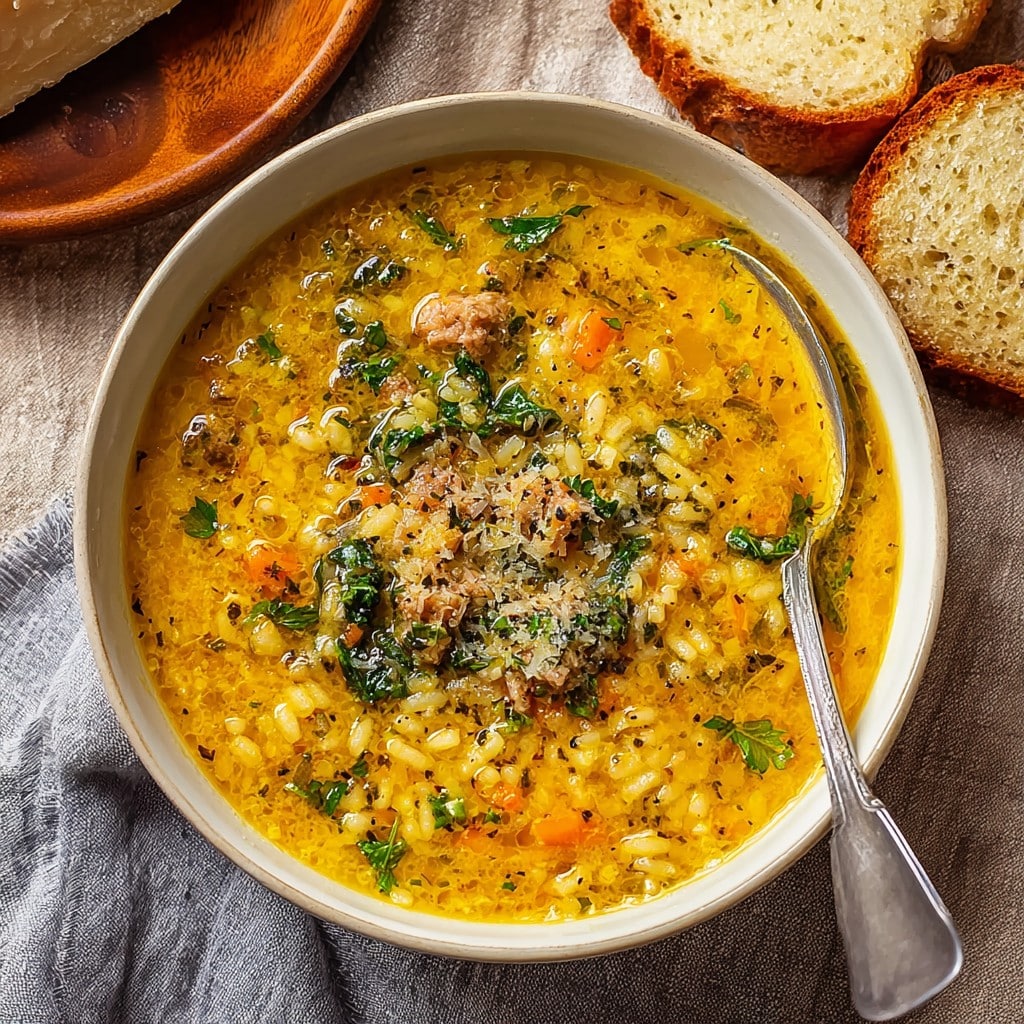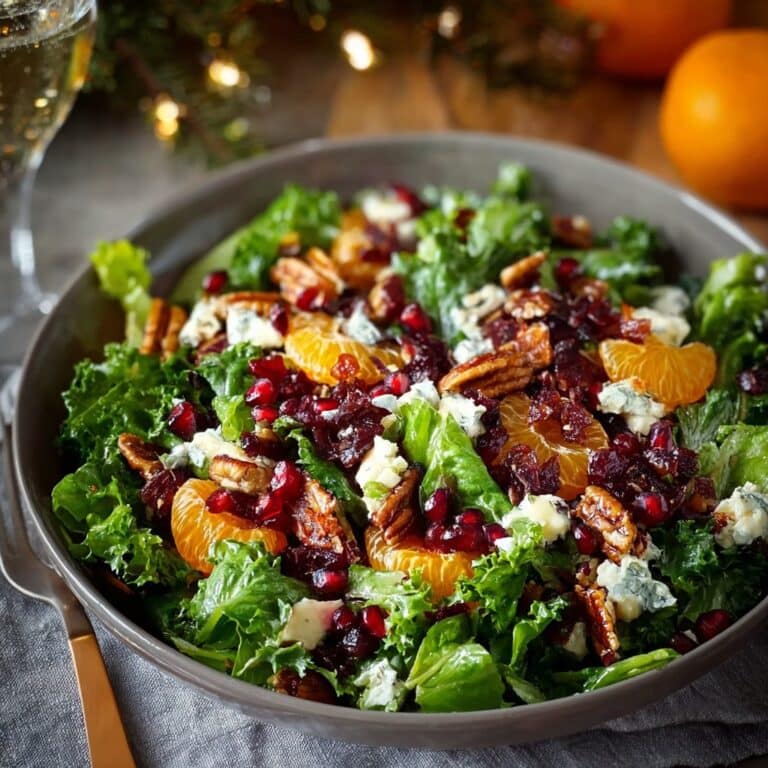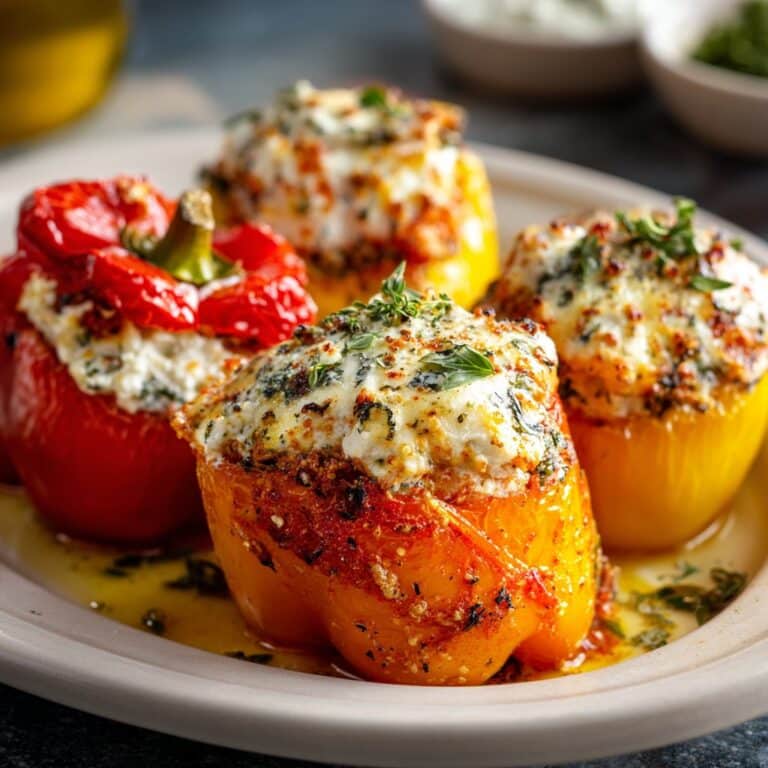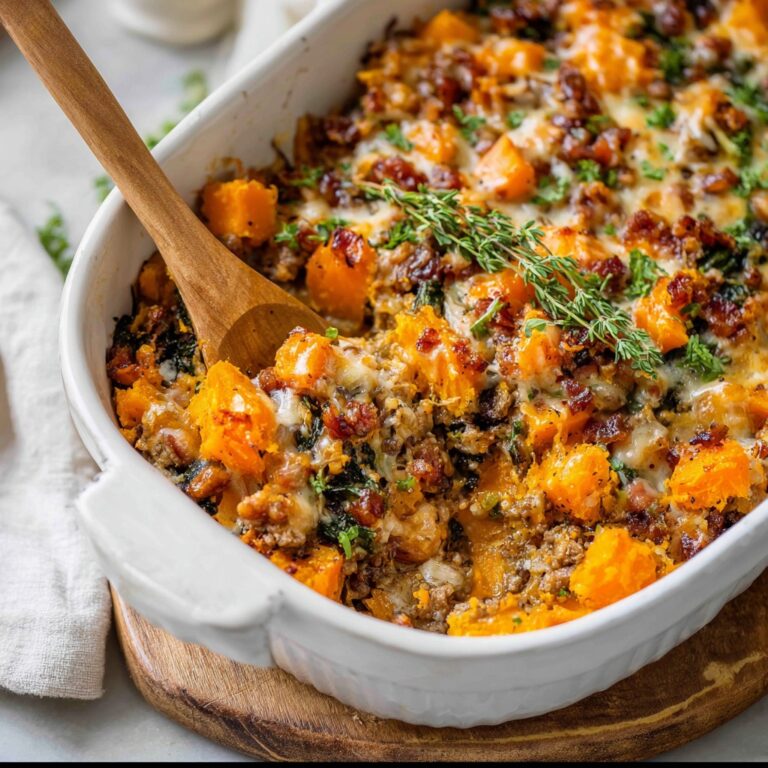Italian Penicillin Soup Recipe: Comfort Food With a Twist
Let Me Tell You About This Italian Penicillin Soup
I learned how to make this soup back when my nose ran faster than I did in the winter (seriously—I thought I could never shake those colds). Anyway, a friend claimed she had the magic cure with this so-called “Italian Penicillin Soup.” At first, I thought she was pulling my leg (I mean, penicillin in soup?), but turns out, this is just what folks call a big bowl of brothy, garlicky chicken soup with a distinctly Italian spin. I’ve been hooked ever since, and now it’s the go-to when anyone in the family so much as sneezes, or just because it’s gloomy outside and something cozy is called for.
Why You’ll Love Making—and Eating—This
I make this when the weather feels like it’s personally offended me, or when someone in the house is giving their best sick puppy impression. My family goes nuts for this because, honestly, it’s homemade chicken soup but with a basil-and-Parmesan twist that makes it sing a little (kind of like if nonna got put in charge of the doctor’s office). If I’m being honest, I used to get a tad annoyed at mincing all that garlic, but now I just smash it with the side of my knife and call it rustic. Plus, this is the one pot where everyone asks for seconds (except my cousin Luca, but he’s wild for pizza, so there’s no pleasing everyone, eh?).
What You’ll Need (And What You Can Get Away With Swapping)
- 1 whole chicken (about 3-4 lbs)—or honestly, sometimes I just use drumsticks when I’m lazy or spot a sale
- 1 big yellow onion, peeled and quartered (red works in a pinch—my grandmother insisted on Vidalia, but hey, onion’s onion)
- 4-5 carrots, sliced however you want (peeling is optional—some weeks I just scrub ’em)
- 3-4 celery stalks, chopped (I skip the leaves sometimes, but if they’re not too wilted, toss ’em in for extra flavor)
- 6 cloves garlic, smashed (don’t be shy—add more if you want to keep the vampires away)
- 1-2 bay leaves (I struggle to remember this step, but it’s worth it)
- 1 big handful fresh parsley, stems and all (dried works if that’s what you’ve got—about 2 tbsp)
- 1 palmful dried oregano
- Salt & black pepper—I just keep tasting until it’s right
- 200g (about 7oz) ditalini, orzo, or broken spaghetti (I once used elbow macaroni. Regret level: low.)
- A good splash of olive oil (any kind, fancy not needed—I sometimes use the one from Aldi!)
- 1 Parmesan rind (optional but fab) (If you have it—if not, just sprinkle cheese on at the end. More on rinds here if you’re curious!)
- Fresh basil leaves, for topping (I skip these in winter, no biggie)
Here’s How I Make This Soup (With a Few Sidetracks)
- First, grab the biggest pot you’ve got. (I borrowed my neighbor’s Dutch oven once – kind soul – but a big soup pot works fine too.) Drizzle in that olive oil and bring it up to medium heat.
- Toss in your chopped onion, carrots, and celery. Give them a good stir and let them sweat until they’re soft(ish). About 5-8 minutes. Don’t let them burn, but don’t hover too much either—just a little golden’s fine.
- Now, press in all those garlic cloves. Deep breath, because it’s gonna smell amazing right about now. Stir them around for a minute. If you’re a garlic maniac like my cousin Rita, this is where you sneak in an extra clove.
- Push the veggies to the side, nestle in the whole chicken, and pour in enough cold water to cover everything—should be around 12 cups. (If you’re using pieces instead of a whole bird, just go by ‘feel’ here. It’s soup, not a science final.)
- Add parsley, oregano, the bay leaves, salt, pepper, and that legendary Parmesan rind if you have it. This is where I start to feel a bit chef-y, even if my slippers say otherwise.
- Bring to a simmer. Skim any weird foam off the top (it always looks a bit suspect, but it’s normal). Partially cover and simmer gently for an hour or so, until the chicken is falling-off-the-bone tender. Set a timer—or don’t, and come back when it smells so good you can’t stand it.
- Take the chicken out (careful, it likes to fall apart), and once it’s cool enough to handle, shred or chop the meat, discarding skin and bones. Try not to sneak too many bites at this stage. Or do. No judgment.
- This is optional, but sometimes I strain the broth to get it all smooth(and pick out annoying celery strings). Most days I just fish out the bay leaves and soldier on.
- Back into the pot goes the chicken, along with pasta. Let it cook till the pasta’s just tender—usually 7-8 minutes. Don’t let the pasta wander off into mush territory; keep an eye (I’ve gotten distracted by phone texts, so… lesson learned).
- Taste, add more salt, pepper, or a little water if it’s become too thick (happens! This soup’s like a sponge).
- Ladle into big bowls, top with fresh basil if you have it, and a heap of Parmesan. Serve to the nearest hungry human.
A Few Notes I Wish Someone Told Me Earlier
- If you add the pasta too soon and then let the soup sit, the noodles will soak up all your broth; much regret. On second thought, sometimes I just cook the pasta separate and add as needed.
- I once tried to make this with rotisserie chicken for speed. It works, but honestly, nothing beats poaching a whole bird. Makes the soup taste, I dunno, rounder?
- If you totally forget the Parmesan rind, just load on extra cheese at serving, no one complains. (If they do, reconsider your guest list!)
Mixing It Up: My Experiments, Both Good and… Not
- I swapped in tortellini once—delicious, but only if you eat it right away. Gets gloopy after sitting.
- Someone told me to add kale. I tried it. The kids revolted, but honestly, I liked the color.
- Don’t try lemon peel. It’s not awful, but it takes over the show; learned that the hard way!
- Oh, and a dash of red pepper flakes? Game changer if you like a little kick.
Tools I Use (But Don’t Beat Yourself Up If You Don’t)
- A huge stockpot or Dutch oven. (If all you’ve got is a regular pot, just keep the water level lower and maybe halve the chicken. Improvisation—it’s classic!)
- Tongs are handy, but more than once I’ve used a slotted spoon and just, well, fished the chicken out.
- Sharp knife, cutting board. No getting around these, but one time I just shredded everything by hand in the pot with two forks. It wasn’t pretty, but it worked fine!

Storing Italian Penicillin Soup (Or Trying To)
You can keep it in the fridge for about 3 days, but honestly, in my house it never lasts more than a day! If by some miracle you have leftovers, stick them in airtight containers. The pasta’ll keep soaking up broth, but that just makes it more like a stew. Freezes decently, just leave the pasta out or add fresh when reheating.
How I Like To Serve It
Big bowls, lots of extra Parmesan, and cracked black pepper on top. My mom always sets out a hunk of crusty bread for dunking. If I’m feeling fancy (rare), I’ll add a drizzle of good olive oil and a squirt of lemon. Oh, and this is not a soup for tiny spoons—use the biggest you’ve got. I sometimes add a cheeky glass of white wine on the side, but that’s another story.
What I Wish I’d Known (My Hard-Earned Pro Tips)
- I once tried to rush the simmering ‘cos I was in a hurry—broth tasted flat and the chicken was sad. Just let it do its thing. Go watch an episode of Bake Off and come back.
- Don’t be stingy with the salt at the beginning. But also, taste at the end; I once overdid it and had to add a potato to rescue it! Who knew?
- And, don’t skimp on the garlic—once, I did half as much, and the soup was just… missing something. Never again.
- Links I trust for soup troubleshooting: Serious Eats’ chicken soup guide is gold, btw.
Real Questions People Have Actually Asked Me
- Can I make this vegan?
- Well… not really, since the chicken is kind of central, but I reckon you could try with chickpeas, veggie broth, and skip the cheese. If you make it work, message me—I’m curious!
- Can I use boneless chicken breasts instead?
- Yes, and I’ve done it when in a rush, but you’ll miss out on that deep flavor the bones bring. Maybe toss in a bouillon cube for backup.
- How do I keep the noodles from getting mushy?
- You can cook them separate—or, as I mentioned, just watch ‘em like a hawk near the end. Some days are better than others; I forget, and it turns to porridge. Still tasty, but, you know…
- Can I freeze this with pasta?
- Technically sure, but when you thaw it, the pasta’s, um, let’s call it ‘tired.’ I suggest freezing the soup, then adding fresh pasta when you reheat.
- Any shortcut if I’m wiped out?
- Grab rotisserie chicken, and boxed broth, and just sauté your veggies in a pot. It’s not exactly nonna’s, but you’ll be eating in under half an hour. I’ve done it and lived to tell.
And now, if you’ll excuse me, all this writing made me hungry. I may have to whip up another pot. Don’t wait for a cold—make this Italian Penicillin Soup for the sheer joy of it. Ciao!
Ingredients
- 2 tablespoons olive oil
- 1 medium yellow onion, diced
- 3 garlic cloves, minced
- 2 medium carrots, sliced
- 2 celery stalks, sliced
- 1 pound boneless, skinless chicken thighs
- 6 cups chicken broth
- 1 teaspoon dried oregano
- 1/2 teaspoon dried thyme
- 1 cup small pasta (such as ditalini or orzo)
- 2 cups baby spinach, roughly chopped
- Salt and freshly ground black pepper, to taste
- Grated Parmesan cheese, for serving
- Fresh parsley, chopped, for garnish
Instructions
-
1Heat the olive oil in a large pot over medium heat. Add the diced onion and sauté until translucent, about 3-4 minutes.
-
2Stir in the garlic, carrots, and celery. Cook for another 3 minutes until the vegetables start to soften.
-
3Add the chicken thighs, chicken broth, dried oregano, and dried thyme. Bring to a boil, then reduce heat and simmer uncovered for 20 minutes.
-
4Remove the chicken thighs, shred them with two forks, and return the meat to the soup. Add the pasta and continue simmering for 10 minutes until the pasta is tender.
-
5Stir in chopped spinach and season with salt and pepper to taste. Simmer for 2-3 more minutes until the spinach wilts.
-
6Serve hot in bowls, topped with grated Parmesan cheese and chopped fresh parsley.
Approximate Information for One Serving
Nutrition Disclaimers
Number of total servings shown is approximate. Actual number of servings will depend on your preferred portion sizes.
Nutritional values shown are general guidelines and reflect information for 1 serving using the ingredients listed, not including any optional ingredients. Actual macros may vary slightly depending on specific brands and types of ingredients used.
To determine the weight of one serving, prepare the recipe as instructed. Weigh the finished recipe, then divide the weight of the finished recipe (not including the weight of the container the food is in) by the desired number of servings. Result will be the weight of one serving.
Did you make this recipe?
Please consider Pinning it!!






